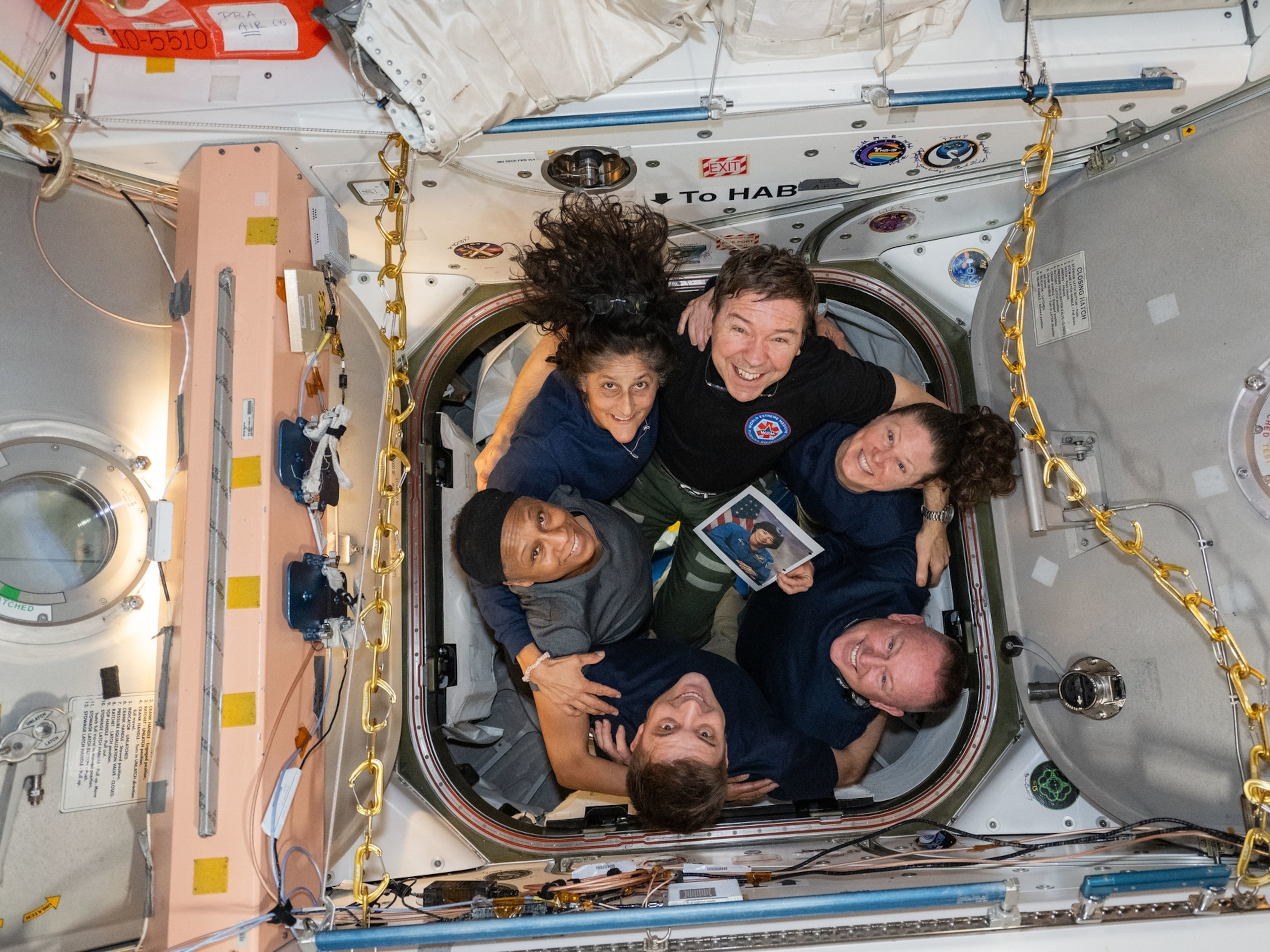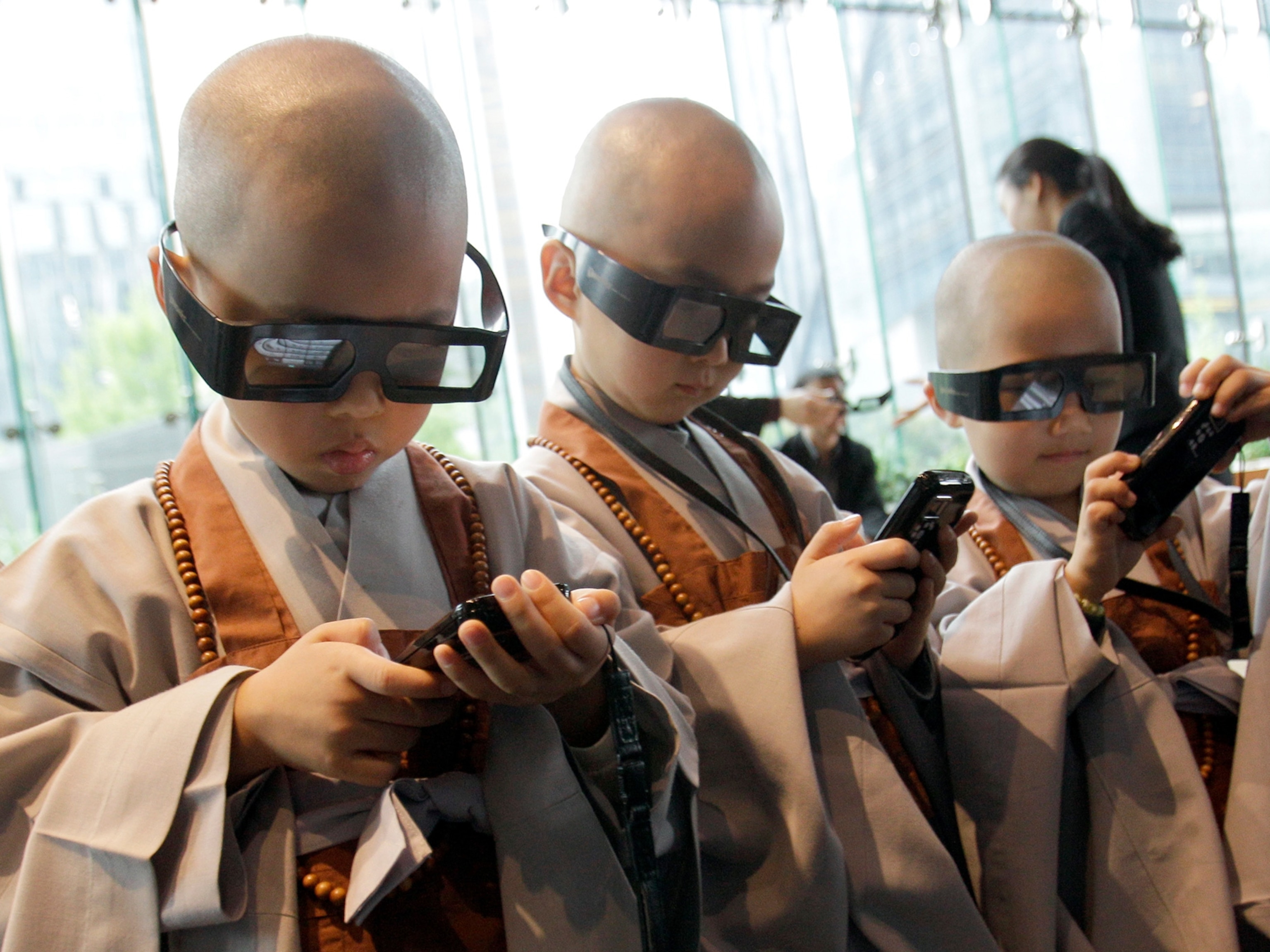
Virtual Trip to Mars Offers Ultimate Preview to Crewed Mission
The technology that simulates an expedition to the red planet may one day allow us to see other worlds through the eyes of astronauts.
Yesterday, I walked on Mars.
Our landing was a bit bumpy, but unlike the European Space Agency’s Schiaparelli lander, which face-planted on the red planet last week, we touched down without creating a new eponymous crater. Then it was off to test my manual dexterity in a pressure suit, which makes doing even the most mundane tasks a total chore. Dear Nut: Please screw yourself onto that bolt, would you? Thanks.
Finally, once that little exercise was accomplished, it was time to take a hop, skip, and a jump across the Martian surface, where gravity is just 38 percent that of Earth’s. And oh, was that wonderful. I felt like I could run forever, bounding over mile after Martian mile in even the most improbable of spacefaring footwear.
Except, no, I couldn’t. I wasn’t on Mars but in National Geographic’s Experience Mars dome in New York City. And once we switched off the antigravity treadmill, I was very familiarly grounded on this planet.
For the next several days, the dome and the interactives inside will give you a chance to experience a bit of what life on the Martian surface could be like—starting with that all-important landing, which is simulated using a cable-suspended, two-seater robot and virtual reality (VR) headset. It was glorious—and way too short, though each simulation sticks its landing, which doesn’t correspond to reality.
Setting payloads down on the Martian surface is a challenge because the planet’s atmosphere is kind of a jerk: It’s too thin to create enough drag for parachutes to safely shepherd a craft to the ground, yet it’s thick enough to fry anything descending through it. So, aside from those times NASA decided to help spacecraft absorb the shock of landing by shielding them in gigantic bouncy balls, landing on Mars now involves some kind of parachute, heat shield, and retro-rocket combo. And everything has to work just right, otherwise ... uh-oh.
(This is what failed during the Schiaparelli lander’s descent: The craft apparently thought it was closer to the surface than it actually was, jettisoned the parachute too soon, and fired its retro-thrusters for not nearly long enough.)
That jerk atmosphere—mostly carbon dioxide, extremely low pressure—also makes it somewhat difficult for humans to casually step outside for a breath of fresh air. In other words, one does not simply walk on Mars. Instead, one must be encased in a space suit that provides breathable air and reasonable pressure. These protective suits are rather bulky and difficult to get around in, which is why doing simple earthly tasks, like coaxing a nut onto a bolt, becomes frustratingly tricky.
In fact, the space suits astronauts wear while spacewalking outside the International Space Station can weigh a whopping 300 pounds on Earth. Good thing microgravity makes that mass imperceptible in space.
And, to an extent, on Mars as well. The treadmill I hopped onto used air pressure to simulate the lower gravity of the Martian environment. After awkwardly pulling on a pair of neoprene bike shorts attached to a zipper-trimmed rubber tutu—Mars fashion, amiright?—you climb onto a treadmill and seal the lower half of your body into an airtight chamber. Then, air is pumped into the chamber until eventually you’re lifted off your feet, courtesy of the stretchy zippered tutu-bike short getup. The machine then calibrates how much air to add or remove until it achieves something resembling Martian gravity—at which point you then don a VR headset and begin running around Mars.
I’m told this same kind of setup is used in physical therapy, but I’m betting those treatments don’t include the snazzy otherworldly scenery.
Maybe someday we’ll all be able to experience that scenery with a little help from VR-equipped astronauts on Mars.
“There are all kinds of capabilities that explorers are going to have in the future—we’re all going to go. It’s not just the crew. For the first time in history, everybody on this world can be an adventurer and be a pioneer along with these explorers,” said author Leonard David, during a panel accompanying the New York premiere of National Geographic’s MARS series, which follows a fictional first team of explorers landing next door in 2033. That narrative is braided together with documentary-style interviews featuring such people as SpaceX founder Elon Musk, astronaut John Grunsfeld, writer Ann Druyan, and Andy Weir, author of The Martian.
(Watch the first episode of the series, streaming online now.)
“I think [the series] recognizes that this is a tipping point,” says executive producer Ron Howard. “The science community and entrepreneurs like Elon Musk, Jeff Bezos, and others are pushing the space program like never before and rediscovering that drive, that kind of primal need to move.”
Sending humans to Mars is achieving a sort of zeitgeist that I can only imagine mimics a bit of the Apollonian crescendo of the 1960s. Recently, Elon Musk described his plan to establish a human settlement on the fourth rock from the sun, President Obama renewed his vow to send humans to Mars, and the European Space Agency put a spacecraft in orbit around the red planet.
There’s no question that achieving this goal will require funding and collaboration of a sort that has never before existed, as competition from private companies pushes government programs to think bigger and act more quickly. And there’s no question that many, many questions need answering before that first spaceship carrying humans far beyond Earth launches.
“Who gets to go? Who gets to be a part of that conversation?” asks astrophysicist and series adviser Jedidah Isler. “This time around, we have the opportunity and the obligation to engage our entire population in this epic journey ... more and better ideas are brought to the fore when different people with different sets of experiences, abilities, and insights are included in the conversation,” she said during a presentation at the White House Frontiers Conference.
As Obama said, what a time to be alive.
Whether humans first walk on Mars in the next decade or the next two decades, Mars is very much in sight. And I, who used to view this particular enterprise with cynicism, am very excited about the probability that people will walk on another planet in my anticipated lifetime—and introduce us all to worlds that used to seem so far out of reach.








